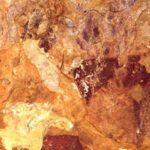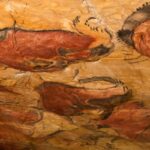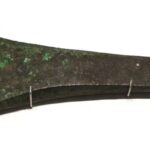We explain what the Neolithic Revolution was, how it originated and what its causes and consequences were. In addition, its economic, social and religious characteristics.
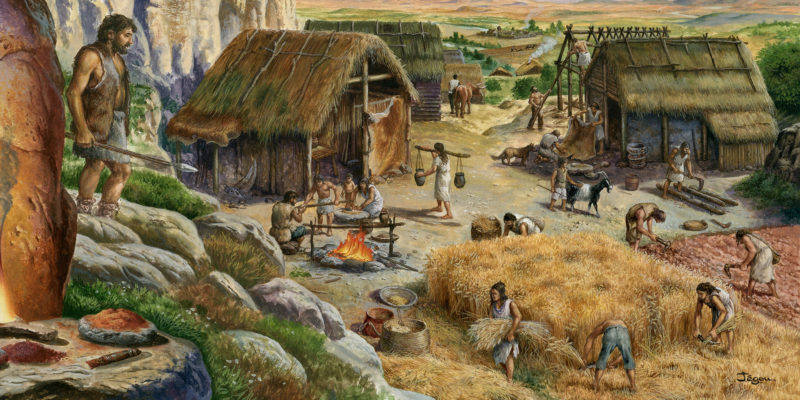
What is the Neolithic Revolution?
The Neolithic Revolution was a process of change in the ways of life of human populations, which consisted of The passage of a hunting economy and collection to a food production economy (agriculture and livestock). This economic transformation also involved the passage of a nomadic lifestyle to another sedentary.
The term “Neolithic revolution” was coined by Marxist archaeologist Vere Gordon Childe In 1936. Although today it is known that the neolitization process was gradual and lasted several centuries, many researchers continue to use the term “revolution” to highlight the radical nature of said transformation, which The lifestyle of human societies changed deeply.
The Neolithic Revolution It originated in the Middle East, in a region that is usually called a fertile growing: A kind of arch constituted by the Mediterranean Levante (the current countries of Israel, Palestine, Lebanon and part of Syria) and the low areas of the Taurus and Zagros mountains (southeast of Turkey, this one of Iraq and an area of the southwest of Iran). These were productive lands with climatic conditions favorable to experimentation with crops and domestication of animals.
Subsequently, the technological and economic transformations of the Neolithic extended to other areas, such as Mesopotamia and the Nile Valley. In addition, in other regions of the world they experienced independent neolitization processes of those that occurred in the nearby East, although they were later. In chronological terms, the Neolithic Revolution It occurred during the so -called stone age And he marked the passage of the Paleolithic period, in which the weapons and tools were made with carved stones, to the Neolithic period, in which the stones were polished and the manufacture of ceramics began. The first Neolithic societies appeared in the IX Millennium a. C.although some characteristics of the Neolithic (such as ceramics) appeared later.

See also: Prehistory
Origin of the Neolithic Revolution
The Neolithic Revolution It began in the IX Millennium a. C. in the fertile growinga region between the Mediterranean Levante and the low areas of the Taurus and Zagros Montes, in the southwest of Asia. This region was made up of land with animal and plant species suitable for agricultural and livestock experimentation, and with favorable rain conditions for cultivation and pastures.
Around the VII Millennium a. C., Neolithic culture extended to Mesopotamia (between the Tigris and Euphrates rivers), and in the V Millennium a. C. The first Neolithic settlements in the Nile Valley (current Egypt) emerged. Although the first moments of neolitization involved sedentarization and domestication of plants and animals, the Neolithic Revolution also implied the development of various technological novelties, such as the invention of ceramics around the VII Millennium a. C.
Causes of the Neolithic Revolution
The causes of the Neolithic Revolution are a topic of debate among specialists. However, many agree that The climate change that began the Holocene around 10,000 a. C. was one of the main factors. The Holocene marked the end of the last glaciation and generated conditions of higher temperature and humidity, favorable to the cultivation of plants and the domestication of animals.
Anyway, some researchers warn that climatic conditions by themselves do not explain the process. This implies that Domestication also depended on a conscious decision on human populationsas a result of observation and experimentation over time (that is, as hunting and collection became more selective).
Therefore, in addition to climatic reasons, among the causes of the neolithic revolution they usually take into account The progressive experimentation of human beings with animal and plant species, and A search to take advantage of the economic possibilities of domestication (to ensure subsistence and reduce dependence on hunting and collection practices) or satisfy cultural impulses that could encourage the process (as a symbolic relationship with animals and with the earth).
Characteristics of the Neolithic Revolution
Agriculture
The main characteristic of the Neolithic Revolution was the step of an economy based on the hunting of wild animals and the collection of fruits and wild plants, an economy based on agriculture and livestock. Hunting and collection remained practiced but their importance was reduced considerably.
Agriculture began after several millennia of manipulation of plants and seeds, which led to experimenting with its reproduction cycles (through planting and harvesting) and moving original species from some areas to another. In this way, it developed Cereal cultivation (especially wheat and barley) and legumes (such as lentils and peas), characteristic species of the fertile growing.
The great advantage of agriculture was that favored human control over food and reduced dependence on the natural availability of resources. Agricultural production also motivated the manufacture of tools for soil manipulation, caused morphological changes in domesticated seeds and plants stimulated sedentary lifestyle.
Cattle raising
The progressive domestication of animals led to the development of livestock (that is, in the care of herds to obtain food or other products such as wool). While the first domesticated animal was the dog, livestock production began with the domestication of The sheep, the goat, the pig and the cow.
Livestock demanded special care and was practiced both by sedentary populations that practiced agriculture and by some groups that were specifically dedicated to nomadic grazing. Pastors belonging to agricultural populations also emerged but dedicated to transhumance (seasonal movement in search of pastures). The herds could offer meat, skin, wool, milk, bones, fertilizer and even animal traction for agricultural or transport tasks.
Sedentary lifestyle
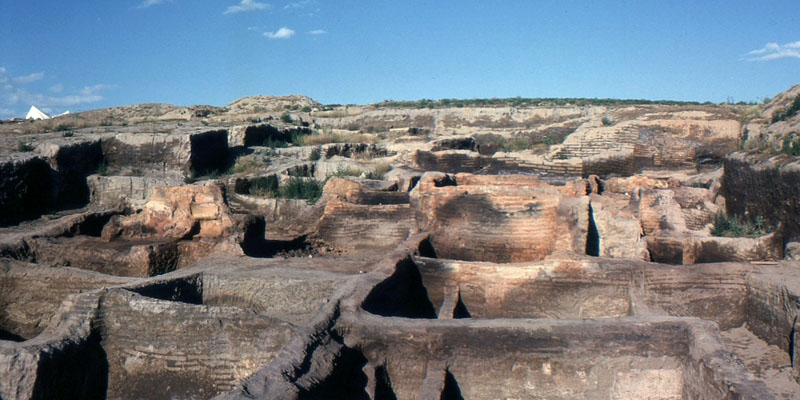
The Neolithic Revolution promoted sedentary lifestyle, that is, The establishment of human societies in fixed places of permanent occupation. In this way, houses built with adobe and villages and villages, such as Jericho (in the current West Bank) or çatal Hüyük (in the current Türkiye).
Sedentary lifestyle was strongly related to the invention of agriculture and livestock, since farmland and herds required human groups to remain in a place to produce, care for and control their resources. To this cultural aspects were added, such as the symbolic connection with the territory (where sometimes the dead were buried) or defensive needs.
Sedentary lifestyle also granted greater security because facilitated the conservation of seeds and cereals in silosboth for the reproduction of the agricultural cycle and to protect themselves from situations of shortage or climatic difficulties. Anyway, the conservation of productive surpluses became a stimulus for the attacks of looting of rival populations.
Ceramics and textiles
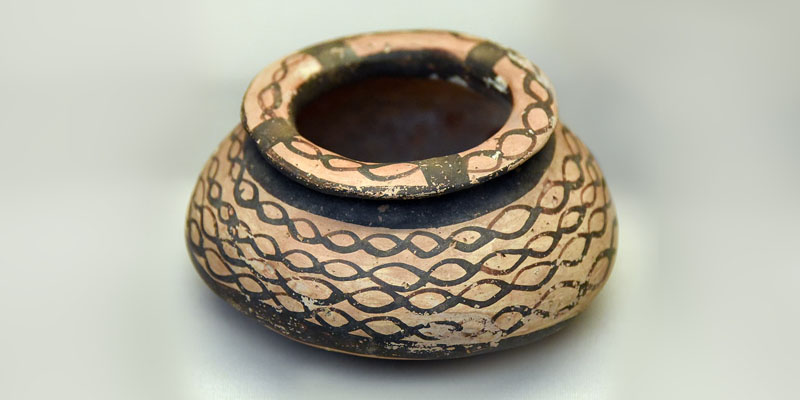
Ceramics, produced by clay cooking, was one of the latest important innovations of the Neolithic Revolution. Appeared around the VII Millennium a. C. and its generalization marks a demarcation point between what is known as a mooring (or precalamic) neolithic and the ceramic (full) neolithic.
The main ceramic objects were bowls or vessels used to cook and store food. In some cases, ceramic containers were decorated. The differences between the materials used, the manufacturing techniques and the styles of the ceramics served the archaeologists to classify different cultural complexes and recognize their geographical distribution and their periods. This procedure was very important because they were societies that had no writing.
For example, The study of ceramics allowed to identify a series of Neolithic cultural sets in the Mesopotamian plaindated between the millennia VII and V AC, who received the names of Hassuna, Samarra and Halaf. The expansion from the south of Mesopotamia of a culture called UBAID was also identified, which extended until the beginning of the IV Millennium a. C.
Another late feature of the Neolithic Revolution was the elaboration of tissues, both with plant fibers and the linen (Employee from the end of the VII Millennium BC) as with animal fibers such as sheep wool (At least since the beginning of the IV Millennium a. C.). The fabrics were important for clothing and replaced the skins of animals used in previous times. Textile production is usually documented by the archaeological finding of loom weights, machines used to weave.
Lithic artifacts
The lithic artifacts (that is, of stone) of the Neolithic in the Middle East differentiated from the characteristics of the Paleolithic. Initially the microlites appearedwhich were smaller than paleolithic instruments and began to be manufactured even before the Neolithic Revolution.
Then more specialized tools were disseminated, made of stone, wood or boneboth for hunting (better arrow points) and for typically neolithic domestic tasks (punches to work the leather, hoces to reap, knives to run or sacrifice, mortars to grind seeds).
Another important feature of the Neolithic Revolution was the use of the Obsidiana volcanic rock originally from Anatolia (current Türkiye) that circulated along the Middle East. Is One of the first indications of long -distance contacts and exchanges. While the obsidian served to manufacture cutting artifacts, its value seems to have been rather symbolic, as it stood out for its glassy green color and was widely used in the realization of decorative objects.
Division of Labor
The Neolithic Revolution caused a demographic increase With respect to the Paleolithic period. The company began to organize in villages and villages composed of nuclear or extensive families who had kinship relations or a common ancestor.
Families, led by their respective family heads, carried out both domestic activities (such as fabrics and ceramics) and communal (for example, agricultural work). There was no social and economic differentiation like the one that arose later, but The division of labor used to be based on age and sex criteria.
Agricultural production and village organization allowed the production of productive surpluses, especially when irrigation techniques began to be used. This contributed to the established exchanges between villages through bartering and that resources were dedicated to the realization of rituals, military activities or constructions.
Religion and funeral rituals
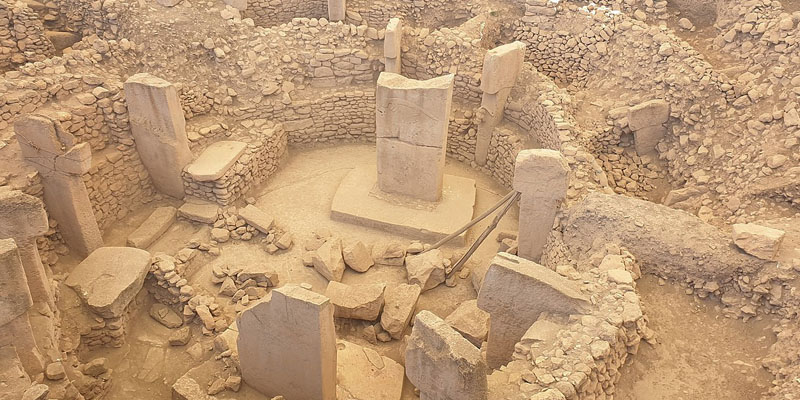
The religious practices of the time of the Neolithic Revolution in the Middle East were strongly influenced by sedentary lifestyle and the agricultural and livestock economy. There are indications of A fertility -centered cultboth human (as they demonstrate female figurines) and linked to animal and plant reproduction cycles (as some symbols and ritual treatment of certain animals suggest).
Unlike later times, in which temples administered by groups of priests and dedicated to some divinity were built, in the phases of the Neolithic Revolution there are evidence of a domestic cult, centered on homes (As testimony in çatal Hüyük, in the current Türkiye) And sometimes in some sanctuaries (as in Göbekli Tepe, also in Türkiye).
Neolithic religion also involved the cult of ancestors and funeral rituals. Sedentary lifestyle determined that the dead were often buried in various areas of the town, under the houses or in surrounding cemeteries. This practice could reinforce the connection of a community with the inhabited territory. In other cases, the bodies could be incinerated or thrown into the water.
Consequences of the Neolithic Revolution
One of the consequences of the Neolithic Revolution was the Dissemination of agriculture and livestock in the Middle Eastnot only in the fertile growing but also in neighboring regions, such as Mesopotamia (whose terrain conditions encouraged experimentation with irrigation techniques) and the Nile Valley.
The multiplication of sedentary villages and, due to the development of agriculture and livestock, the generation of productive surpluses. These surpluses allowed to sustain practices and activities not oriented to produce subsistence goods, such as the celebration of rituals, handicraft production or long distance exchanges.
Finally, the neolithic revolution is usually considered as a necessary condition for another process of historical change that took place in the Middle East and the Northeast of Africa and that Red Gordon Childe called “Urban Revolution.” This implied the emergence of cities and forms of state social organization in the lower Mesopotamia (current south of Iraq) and the Nile Valley in the IV Millennium a. C.
Continue with:
document.addEventListener(“DOMContentLoaded”, (e) => {
var sliderContainer, slider;
sliderContainer = document.getElementById(‘block_7805c97c40352d86258c1a14e52bb2fe’);
if (typeof initSlider !== ‘function’) {
console.log(‘Swiper haven\’t been loaded’);
sliderContainer.className += ‘ fw scroll-snap’;
return;
};
options = {
direction: ‘horizontal’,
speed: 1000,
slidesPerView: ‘auto’,
// slidesPerGroup: 1,
centerInsufficientSlides: true,
// centeredSlides:true,
spaceBetween: 15,
breakpoints: {
720: {
// centeredSlides: false,
// slidesPerGroup: 2,
spaceBetween: 25
},
},
pagination: {
el: ‘.swiper-pagination’,
type: ‘bullets’,
clickable: true
},
}
slider = initSlider(sliderContainer, options);
})
References
- Aurenche, O. & Kozlowski, SK (2003). The origin of the Neolithic in the East. The lost paradise. Ariel.
- Britannica, Encyclopaedia (2023). Neolithic. Britannica Encyclopedia. https://www.britannica.com/
- Liverani, M. (1995). The Old East. History, society and economy. Criticism.

